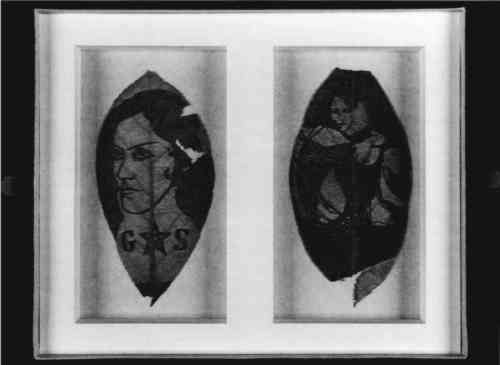TWO HOUSINGS: MODIFYING A STANDARD BOX AND CONSTRUCTING AN OVERSIZE SINK MATPATRICIA INGRAM
2 LEAF PORTRAIT HOUSING: MODIFYING A STANDARD BOXHousing two portraits of Gloria Swanson made from large plant leaves posed several interesting challenges. The image is formed in each leaf by the removal of material between the vein structures (fig. 1). These extremely fragile and desiccated artifacts could not be allowed to move within the housing and needed more support than simple encapsulation would provide. The curator requested that they not be restrained by any strap or covering material that would obstruct visual examination by the researcher but agreed to restrict examination to the recto only.
A 1 in. deep double sink was constructed of four-ply mat board within a standard print box. The bottoms of the sinks were covered with Japanese paper (okawara), which was lightly sanded to raise a nap forming a friction mount. The leaves, once positioned in the sinks, are gently but adequately restrained. If necessary, the leaves can be carefully lifted out by a conservator. A removable sheet of four-ply mat board was laid across the top of the mat to reduce disturbance of the leaves by the partial vacuum created by lifting the box lid. Finger holes cut in this sheet allow it to be easily removed and prevent it from creating the same vacuum effect, when raised, as the lid. The original housing, a paper folder, was put in a 20 point lignin-free tuxedo wrapper attached to the four-ply sheet. Velcro tabs attached to the lid and bottom of the box secure the lid when the box is closed. This housing was made 2 years ago, and the objects have been viewed frequently since. The friction mount allows the housing to be moved, jostled, even tilted, without any disturbance of The estimated construction time for this project is 5 hours. Project supervision and design were by Patricia Ingram. Housing construction and design were by Margaret Brown and Ethel Hellman. |
